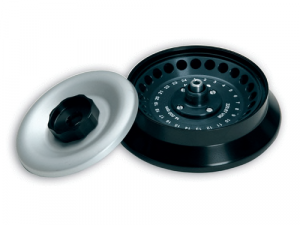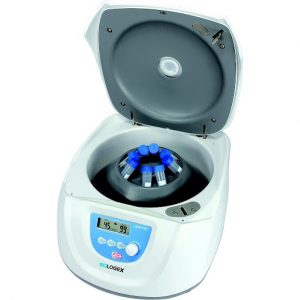

Centrifuges are a very powerful tool used for many routine procedures in the biological laboratory. Centrifuges can spin at extremely high rotations per minute (rpms) and impart great energy onto samples, thus increasing the risk of aerosol generation. This equipment can also present a physical hazard due to mechanical stress or fatigue. When utilizing centrifuges in the laboratory, the following guidelines should be followed:
- Individuals must be trained in the proper operation, disinfection, and safe practices before starting work.
- Appropriate PPE is worn such as face/eye protection, gloves, gown, or other PPE as determined by risk assessment
- Inspect all tubes for deficiencies, affix lids if present
- Disinfect equipment before and after use if centrifuging biohazardous or potentially biohazardous materials
- Balance all loads, use simulated samples if necessary to counterbalance. Ensure tubes are properly seated in the rotor.
- Do not overload the rotor, consult manufacturer for maximum weight rating.
- Avoid overfilling tubes or other containers. Angled rotors may force liquid up the side.
- Inspect gaskets on lids or sealed rotors/safety cups before each use, replace gaskets if cracked or broken.
- Ensure rotor, rotor lid, and unit lid is fully secured/latched before starting cycle
- Choose an appropriate speed for the material and tubes being used. Consult manufacturer for maximum rate speeds for tubes and materials
- If a spill occurs within the centrifuge inside a BSC: shut the unit down immediately, keep the BSC running and keep the centrifuge lid closed, implement spill clean up procedures.
- If a spill occurs within the centrifuge outside of a BSC: shut the unit down immediately and keep the centrifuge lid closed, wait for aerosols to settle and move the unit into BSC if possible to implement spill clean up procedures.
- Establish a schedule for preventative maintenance. Be sure to include regular cleaning and equipment/accessory inspection.
- Never use a rotor that has been dropped, retire rotors and other accessories after the manufacturer’s recommended lifespan.
More information on centrifuges can be found utilizing the following resources